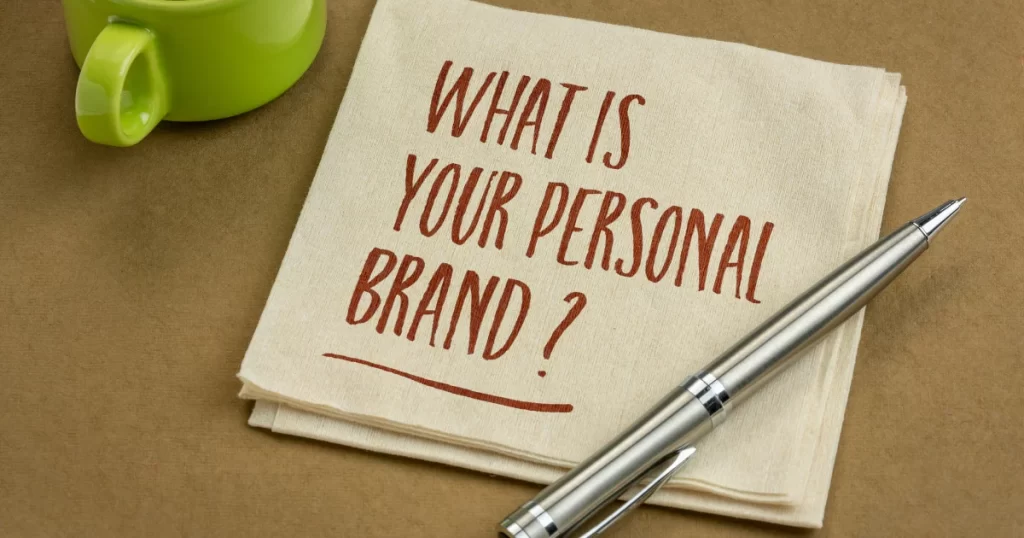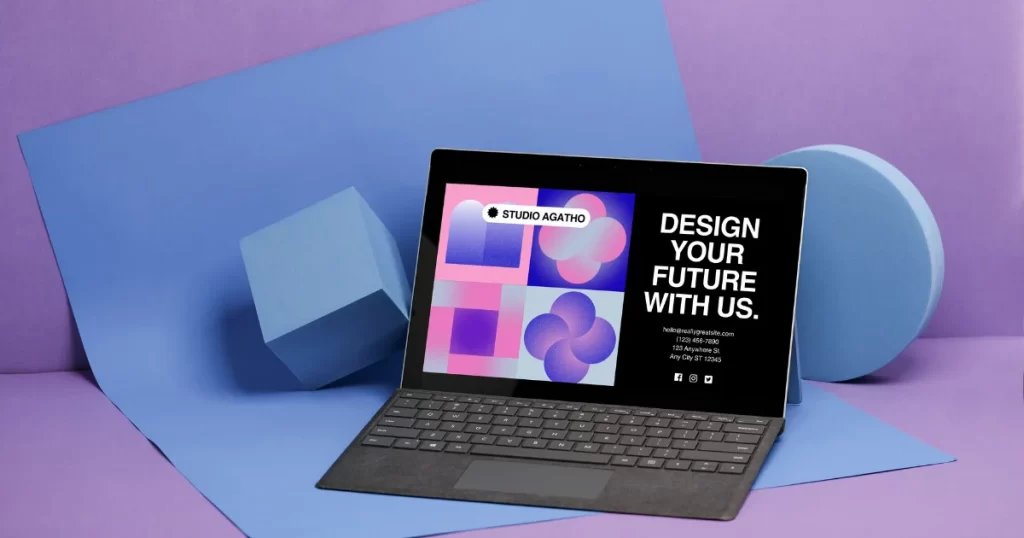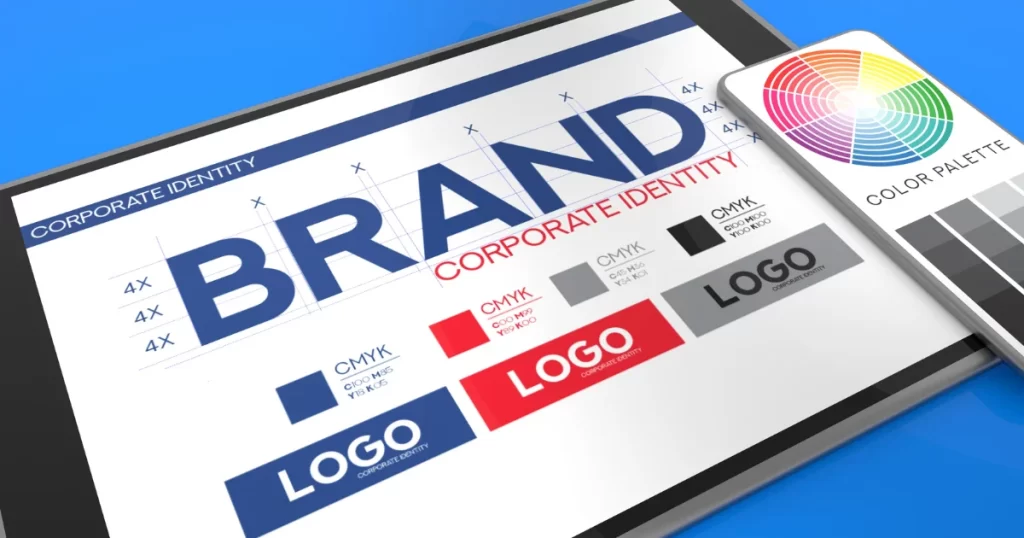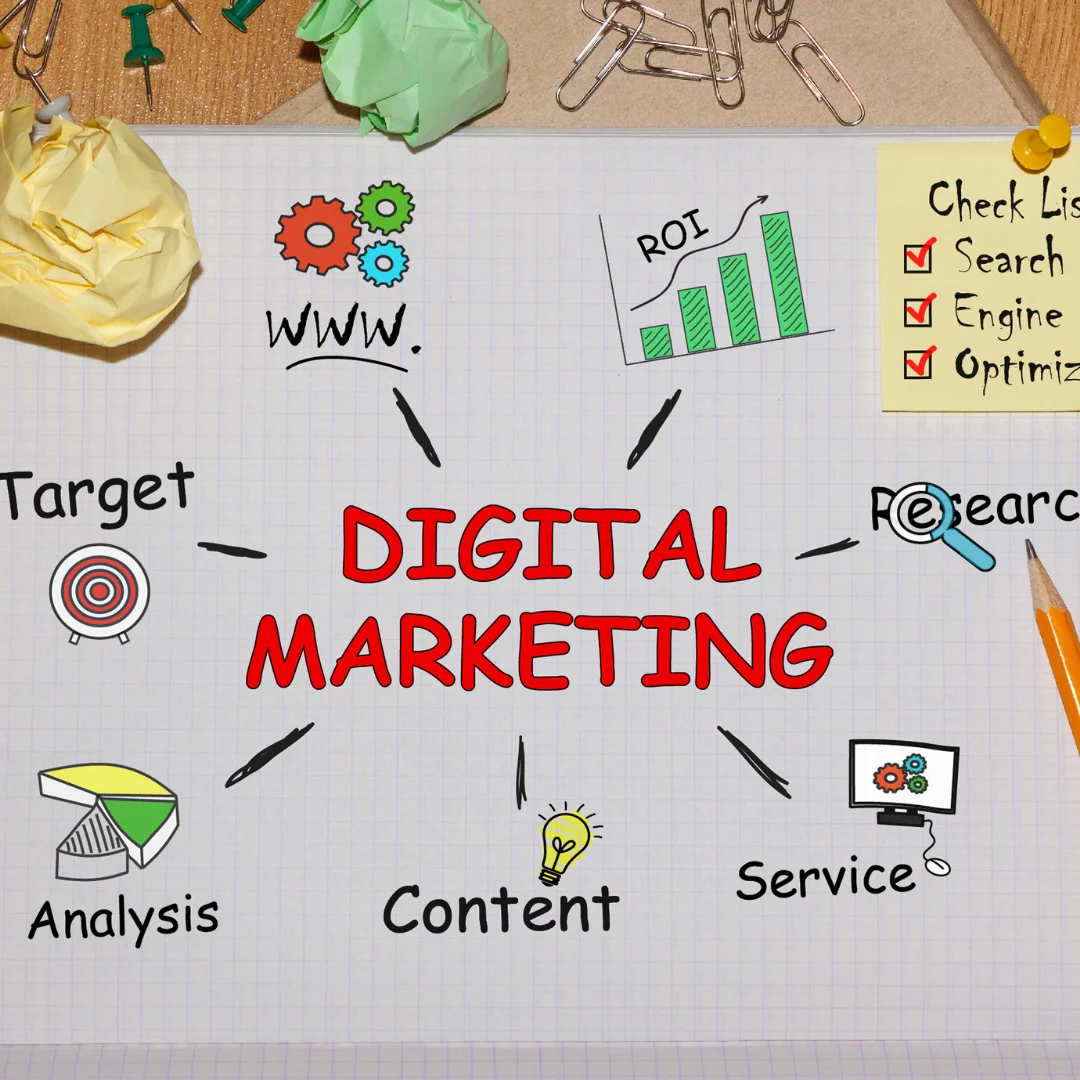Let’s Be Honest: Social Media is the Modern-Day Colosseum
Picture this: It’s the year 120 AD, and the Roman Colosseum is packed with thousands of spectators. Gladiators are fighting tooth and nail (sometimes literally), trying to win over the roaring crowd. Fast forward to today, and social media is basically the same thing—minus the swords and a lot more selfies. Instead of lions, you’re up against trending dances, viral memes, and those oddly mesmerizing “restock” videos.
Here’s the brutal truth: If your brand identity doesn’t stand out, you’ll get trampled by the herd of sameness. You’re not just competing for eyeballs—you’re fighting for attention spans shorter than the time it takes to say, “Wait, what’s this reel about again?”
But don’t worry. You don’t have to be the biggest or loudest gladiator in the arena; you just have to be the most memorable. That’s where your brand identity comes in—a mix of visuals, tone, and vibes that makes your audience say, “I like their style.”
What Is Brand Identity, and Why Should You Care?

Okay, let’s strip this down to the basics. Brand identity is like your brand’s DNA, personality, and wardrobe all rolled into one. It’s what makes your brand instantly recognizable, whether someone’s scrolling on Instagram at 3 a.m. or spotting your logo on the side of a delivery van.
Without a solid brand identity, your social media presence is like that one friend who always changes their personality depending on who they’re hanging out with—confusing, inconsistent, and kind of exhausting. A strong brand identity creates cohesion, builds trust, and makes people actually care about what you’re posting.
Why Care About Brand Identity?
Because your audience does. People don’t just buy products—they buy stories, aesthetics, and vibes. A memorable brand identity gives them a reason to follow, share, and engage with you. It’s what turns casual scrollers into loyal customers and evangelists.
The Role of Social Media in Brand Identity
Let’s set the record straight: Social media isn’t just a place to dump promotional posts or share blurry event photos. It’s the stage where your brand gets to shine like the lead in a Broadway show. Every post, story, comment, and DM is a chance to shape how people perceive you.
Here’s the kicker: Social media amplifies everything. Good branding? It’s like a spotlight that makes you glow. Bad branding? Well, let’s just say the comments section won’t be kind.
How Social Media Shapes Brand Perception
Imagine your social media profiles as the first date with your audience. What impression are you leaving? Are you the mysterious charmer, the class clown, or the heartfelt storyteller? Your brand identity dictates that vibe.
Why Social Media Is a Non-Negotiable for Branding:
| Reason | Why It Matters | Example |
|---|---|---|
| Visibility | Billions of users = unmatched exposure | Aesthetic Instagram grids |
| Engagement | Direct interaction builds loyalty | Responding to comments with humor |
| Storytelling | Share your brand’s journey | Behind-the-scenes TikToks |
Without a memorable brand identity, your social media presence is just noise. With one? It’s a symphony of likes, shares, and “OMGs, I love this brand!”
Understanding Brand Identity

Definition and Elements of Brand Identity
At its most basic, brand identity is how you want your audience to perceive you. It’s not just your logo or tagline (though those are important); it’s the entire experience people have when they interact with your brand.
Think of it this way: If your brand were a person, brand identity is their vibe, wardrobe, and way of speaking. Are they the sleek minimalist in all black? The quirky creative with mismatched socks? Or the reliable friend who always shows up with coffee?
Why It’s More Than Just Looks
Sure, a snazzy logo and killer color scheme are nice, but brand identity goes deeper. It’s the gut feeling people get when they think about your brand. It’s the difference between someone saying, “Oh, that’s a cool product,” and, “I need to buy this right now!”
Key Components of Brand Identity
Here’s the trifecta of what makes up a killer brand identity:
- Visual Elements
This is the eye candy that grabs attention. Logos, colors, typography, and imagery all fall into this bucket. Think Coca-Cola’s red or Nike’s swoosh—they’re instantly recognizable.- Logos: Your brand’s signature. Keep it simple, scalable, and timeless.
- Colors: These aren’t just pretty—they evoke emotions. For example, blue builds trust, while red sparks excitement.
- Typography: Fonts aren’t just letters; they’re a vibe. Serif fonts feel traditional, while sans-serif screams modern.
- Tone of Voice
Your voice is how your brand “talks.” Is it playful, formal, sarcastic, or empathetic? Whatever tone you choose, keep it consistent. For example:- Wendy’s: Hilarious and savage.
- Dove: Compassionate and empowering.
- Duolingo: Chaotic and unhinged (in the best way possible).
- Emotional Impact
Let’s not sugarcoat it: People are emotional creatures. Your brand identity needs to tap into their feelings—whether it’s joy, nostalgia, or even FOMO. The goal? Create an emotional connection so strong that they choose your brand over the 10,000 others in their feed.
Pro Tips for Crafting a Killer Brand Identity
| Component | Do This | Avoid This |
|---|---|---|
| Logo | Keep it simple and scalable | Overcomplicating it with details |
| Color Palette | Choose 2-3 core colors with emotional resonance | Using every color of the rainbow |
| Tone of Voice | Test your tone with A/B captions | Trying to copy a competitor’s voice |
💡 Why Brand Identity Is Non-Negotiable: Without a clear brand identity, your social media feeds are just a random collection of posts, and your audience? Confused. But with the right identity? You’re not just a brand—you’re a movement.
Steps to Build a Memorable Brand Identity on Social Media
Let’s roll up our sleeves and get to work. Crafting a memorable brand identity isn’t rocket science, but it’s not as simple as slapping a logo on everything and calling it a day. It’s about creating a consistent, engaging, and authentic presence that makes people stop scrolling, pay attention, and—dare we say—fall in love with your brand.
1. Create a Style Guide for Consistent Branding Across Channels

Consistency is more than a buzzword—it’s the secret sauce of trust-building. Imagine following a brand that’s minimalist on Instagram, edgy on Twitter, and downright chaotic on TikTok. Confusing, right? That’s why you need a style guide—your brand’s rulebook for looking and sounding like you, no matter the platform.
What to Include in a Style Guide
Your style guide should be detailed enough to keep your brand consistent but flexible enough to adapt to different platforms. Think of it as your brand’s DNA blueprint:
| Element | Why It Matters | Example |
|---|---|---|
| Color Palette | Evokes emotions and sets the tone for your brand | Coca-Cola’s iconic red = excitement |
| Typography | Adds personality and hierarchy to visuals | Netflix’s sleek custom font |
| Imagery Guidelines | Ensures cohesive visuals across all platforms | Airbnb’s clean, inviting photos |
| Logo Usage | Defines how your logo appears in different settings | Nike’s swoosh—always recognizable |
| Tone of Voice | Keeps your messaging consistent and authentic | Wendy’s snarky tweets |
Pro Tips for a Killer Style Guide:
- Be Detailed: Include examples of do’s and don’ts for every element.
- Keep It Visual: Use mockups and templates to show your style guide in action.
- Update Regularly: Social media trends evolve, and so should your style guide.
2. Establish a Unique Brand Personality That Resonates With Your Audience
Let’s be real: No one wants to hang out with a boring or try-hard brand. Your brand personality is what makes people click “Follow,” not “Unfollow.” It’s the human element of your brand—how you “speak,” “act,” and connect emotionally with your audience.
How to Define Your Brand Personality
- Start with Adjectives: Write down three words that describe your brand. Are you bold, quirky, and rebellious? Or are you dependable, approachable, and heartfelt? These adjectives will shape your tone, visuals, and overall vibe.
- Test the Waters: Experiment with different tones in your captions and responses. For example:
- A tech startup might go for playful captions like, “We’re fixing bugs faster than you can say ‘404 error.’”
- A wellness brand might prioritize calm and encouraging messaging, like, “Take a deep breath—self-care starts here.”
- Ask Your Audience: Use polls or surveys to see how your followers perceive you. Their input can be gold for fine-tuning your personality.
Examples of Brand Personalities Done Right
| Brand | Personality Traits | Why It Works |
|---|---|---|
| Wendy’s | Snarky, witty, unapologetic | Makes followers laugh and engage |
| Patagonia | Passionate, eco-conscious, authentic | Aligns with their mission and values |
| Nike | Inspirational, bold, empowering | Motivates and connects emotionally |
3. Design Eye-Catching Visual Elements That Reflect Your Values
Visuals are your brand’s first impression, and let’s face it, people do judge a book by its cover—especially on social media. If your visuals don’t align with your values, your audience will notice (and not in a good way).
Tips for Visual Branding
- Logo Design: Your logo is the face of your brand. Keep it simple, scalable, and timeless. Think of Apple’s logo—it’s iconic without being overly complicated.
- Color Psychology: Colors aren’t just pretty—they communicate emotions.
- Red: Passion, urgency, excitement (think Coca-Cola or YouTube).
- Blue: Trust, calm, reliability (think Facebook or PayPal).
- Yellow: Optimism, happiness, energy (think McDonald’s or Snapchat).
- Typography: Fonts set the tone for your messaging.
- Serif Fonts: Traditional and professional (e.g., Times New Roman).
- Sans-Serif Fonts: Modern and clean (e.g., Helvetica).
- Script Fonts: Elegant and personal (e.g., Brush Script).
- Imagery: Use high-quality visuals that align with your brand’s aesthetic. For example, a luxury brand might use sleek, polished photos, while a lifestyle brand might opt for candid, relatable shots.
4. Maintain Consistency Across All Platforms
Your Instagram shouldn’t look like your Facebook’s estranged sibling who’s going through a rebellious phase. Consistency across platforms builds trust, recognition, and that “aha!” moment when someone instantly identifies your brand.
Pro Tips for Consistency
- Use Scheduling Tools: Plan your content ahead of time to ensure a cohesive look and tone. Tools like Hootsuite or Later can help you batch content and maintain consistency.
- Repurpose Content: Adapt your posts for different platforms while keeping your core message the same. For example:
- Instagram: Share a carousel of tips.
- Twitter: Post a snappy one-liner.
- TikTok: Create a short, engaging video around the same topic.
- Audit Regularly: Conduct monthly audits of your social media profiles to ensure everything aligns with your brand identity.
Why Consistency Matters
| Benefit | Why It’s Important |
|---|---|
| Builds Trust | Audiences are more likely to engage with brands they recognize. |
| Enhances Recall | Consistent branding makes you memorable. |
| Shows Professionalism | A cohesive presence = a brand that knows its stuff. |
Engagement Strategies for Building Brand Identity

Social Media Is a Two-Way Street
Picture this: you’re shouting into a void. That’s what happens when you post on social media without engaging your audience. People comment, ask questions, or even tag you, and you respond with…silence? Yikes. Ignoring engagement opportunities is like ghosting on the first date—except your audience won’t give you a second chance.
Best Practices for Engagement
- Respond to Comments Within 24 Hours
- Why? It shows you care. Plus, algorithms love accounts that interact with followers. Bonus points for witty comebacks or heartfelt replies.
- Follower: “Love this product! Does it come in blue?”
- Brand: “It sure does! Blue as the sky on a perfect day. Check it out here: [link].”
- Join Trending Conversations
- But tread carefully. Jumping into a trend just because it’s popular can backfire if it feels forced. Align your participation with your brand identity.
- Example: A skincare brand could chime in on “self-care Sunday,” while a tech brand might share a clever take on a trending meme.
- Create Interactive Content
- Polls, quizzes, Q&A sessions—these make your audience feel involved.
- Example: A fitness brand could post, “What’s harder: leg day or saying no to pizza? Vote below!”
- Celebrate User-Generated Content (UGC)
- Reposting your followers’ content is the digital equivalent of a high-five. It builds loyalty and makes your audience feel valued.
Collaborating With Other Brands

Why Go Solo When You Can Team Up?
Teaming up with another brand is like a duet on social media. When done right, it’s a harmonious blend of audiences, creativity, and exposure. However, choose your partners wisely—pairing a vegan brand with a butcher shop? Probably not the vibe.
Cross-Promotion Ideas
| Brand Type | Collaboration Example | Benefits |
|---|---|---|
| Complementary | Coffee brand + pastry shop | Wider audience reach |
| Similar Values | Eco-friendly brands teaming up | Strengthened brand message |
| Seasonal Partnerships | Fitness brand + athletic apparel company | Capitalize on holiday campaigns |
How to Collaborate Successfully
- Find the Right Partner: Look for brands with overlapping audiences but distinct offerings.
- Create Joint Campaigns: Launch a giveaway, co-branded product, or shared content series.
- Promote Consistently: Both brands should share the campaign across their platforms.
Developing an Effective Content Strategy

Content Is King, Queen, and the Entire Royal Court
Without a content strategy, your posts are just random noise in the digital void. A strong content strategy gives your brand identity direction, purpose, and—most importantly—results.
Balancing Content Types
| Content Type | Purpose | Example |
|---|---|---|
| Educational | Builds authority and trust | “5 Tips for Better Branding” |
| Entertaining | Keeps followers engaged | Memes, polls, funny videos |
| Promotional | Drives sales and awareness | Product launches, discounts |
| Inspirational | Connects emotionally with the audience | Quotes, success stories |
| UGC | Builds community and loyalty | Sharing customer reviews or photos |
Tips for Content Strategy Success
- Plan Ahead: Use content calendars to map out posts for at least a month. This prevents last-minute scrambling and ensures a cohesive narrative.
- Repurpose Content: Turn a blog post into an infographic, a video, and multiple social posts. Squeeze every ounce of value from your content.
- Analyze Performance: Use analytics tools to track what works and what doesn’t. Double down on successful formats and refine the rest.
Case Studies of Brands Killing It on Social Media
Wendy’s: The Queen of Sass
Wendy’s Twitter is a masterclass in roasting competitors and engaging audiences. Their unapologetic tone and snarky humor make them impossible to ignore.
- Why It Works: Wendy’s knows its audience. Fast food fans love humor and shade, and Wendy’s delivers both with precision.
- Takeaway: Don’t be afraid to take risks with your tone—just make sure it aligns with your brand identity.
Duolingo: The Unhinged Mascot
Duolingo’s TikTok is a chaotic masterpiece. Their owl mascot dances, jokes, and even flirts (yes, really). It’s weird, hilarious, and unforgettable.
- Why It Works: They’ve embraced TikTok’s quirky, unpolished vibe while making learning languages look fun.
- Takeaway: Being “weird” can work wonders if it’s authentic and resonates with your audience.
Conclusion: Building a Memorable Brand Identity on Social Media
Creating a standout brand identity on social media isn’t a sprint—it’s a marathon with a few hurdles and the occasional meme-worthy moment. It’s about showing up consistently, engaging authentically, and experimenting fearlessly.
Follow the strategies above, and soon, your brand won’t just be another account on someone’s feed—it’ll be the account they’re excited to see. Now go forth, build your empire, and remember: the social media battlefield favors the bold (and the witty).





